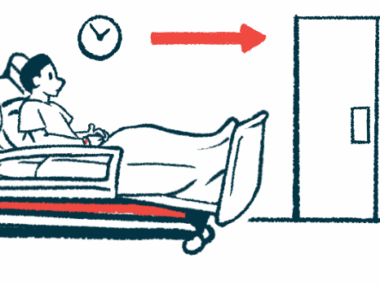Exercise Is Good for Us, So Let’s Get Moving!
Written by |

“Movement is medicine.” I have heard this saying a few times, and I wondered what it was about.
Years ago, doctors typically told Charcot-Marie-Tooth (CMT) patients that exercise is not the best option. The Hereditary Neuropathy Foundation is working to change that. The foundation suggests that people with CMT do about 150 minutes of exercise a week, including muscle- and bone-strengthening activities at least twice a week.
According to Harvard Medical School’s Sabrina Paganoni, exercise for CMT revolves around four modalities: balance, stretching, endurance, and strength. Tai chi or modified chair yoga can help with balance. Stretching can help to prevent pain and to maintain range of motion in joints. CMT patents also should incorporate heel cord stretches daily, Paganoni said.
Aerobic exercise helps to maintain cardiovascular health and has shown positive effects on overall health as well. Strength training can help to maintain strength in the muscles that are not affected by CMT, as we can’t rebuild muscles already affected by CMT.
It is important for CMT patients to exercise to maintain current strength and flexibility. So, what are the best exercises for us to do? Following are a few suggestions:
- Swimming
- Balance walking, with walking poles if desired
- Yoga or chair yoga, if balance is difficult
- Home exercise with resistance bands or dumbbells
- Pilates
- Tai chi
- Recumbent cycling
For more ideas, the Charcot-Marie-Tooth Association has an exercise video series here.
It is important not to overdo it when exercising. It also is necessary to talk to your doctor or physical therapist about which exercises are best for you.
Exercise can be difficult at times for those with CMT or other physical issues, but we need to move. Even standing up and walking around for five minutes every hour can improve your health. One study reported by The New York Times found that when participants moved more often, they were happier, less fatigued, and had fewer food cravings. I guess walking around my classroom has more advantages than just checking on the students.
Did you know that exercising 20 minutes a day can support the immune system and produce an anti-inflammatory response? I wonder if the fact that I am exercising a few days a week is why I have less joint pain. It seems that movement can be medicine.
There are several studies that show that movement is beneficial for CMT patients. We need to be sure we are maintaining the muscle strength and flexibility we have. It is important to move each day, even for a few minutes. There are many benefits to movement, so let’s get moving!
***
Note: Charcot-Marie-Tooth News is strictly a news and information website about the disease. It does not provide medical advice, diagnosis, or treatment. This content is not intended to be a substitute for professional medical advice, diagnosis, or treatment. Always seek the advice of your physician or other qualified health provider with any questions you may have regarding a medical condition. Never disregard professional medical advice or delay in seeking it because of something you have read on this website. The opinions expressed in this column are not those of Charcot-Marie-Tooth News or its parent company, Bionews Services, and are intended to spark discussion about issues pertaining to Charcot-Marie-Tooth.





Christine Wodke
Great message to get out. We cannot say it enough. I have seen the converstion in the community change from We can't evercise to What kind of exercise can we do ?
I know first hand the value of exercise. Those with CMT can do exercise. Some of Team CMT members have even run marathons and done Ironman triathlons. The best advise is to do what you can within the limits of your CMT